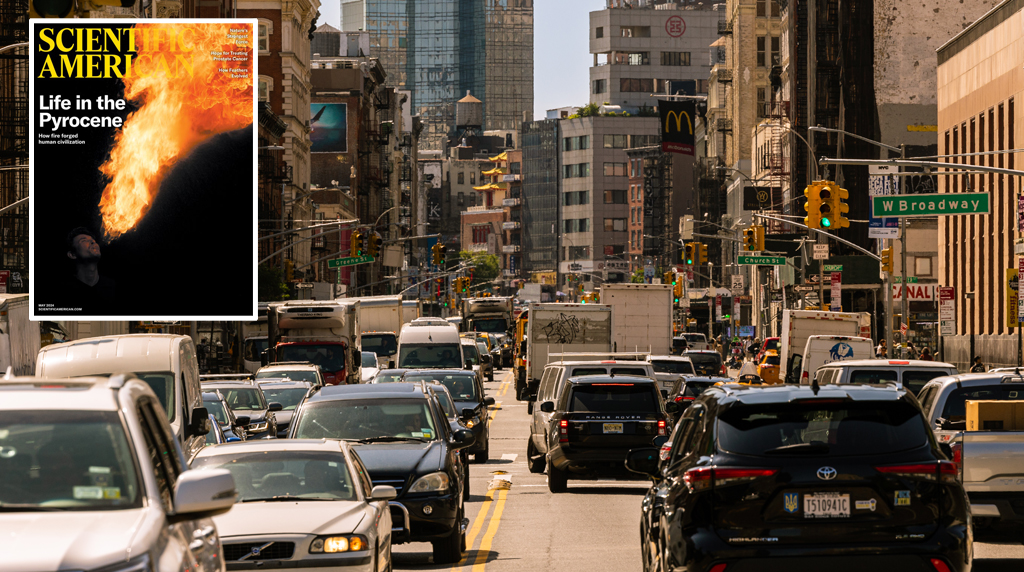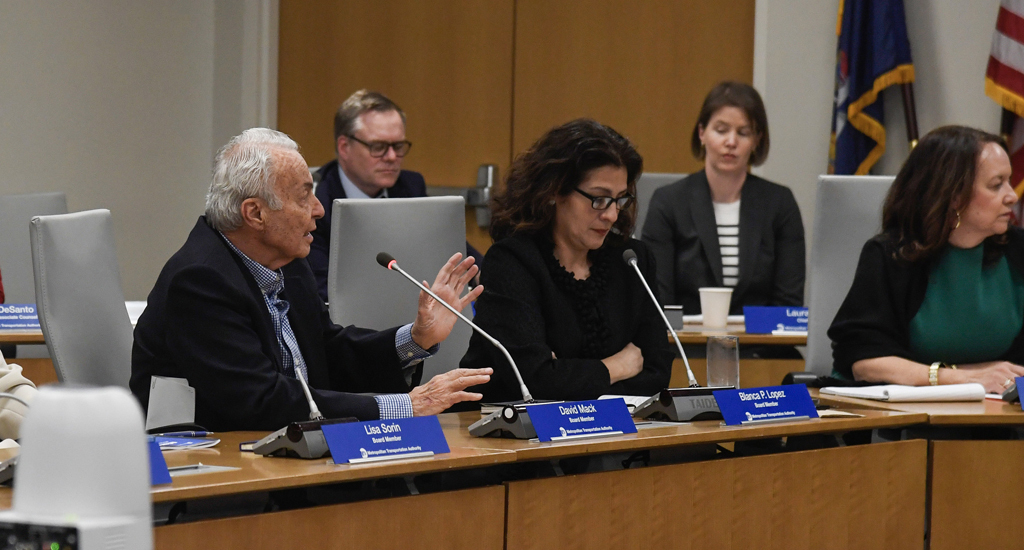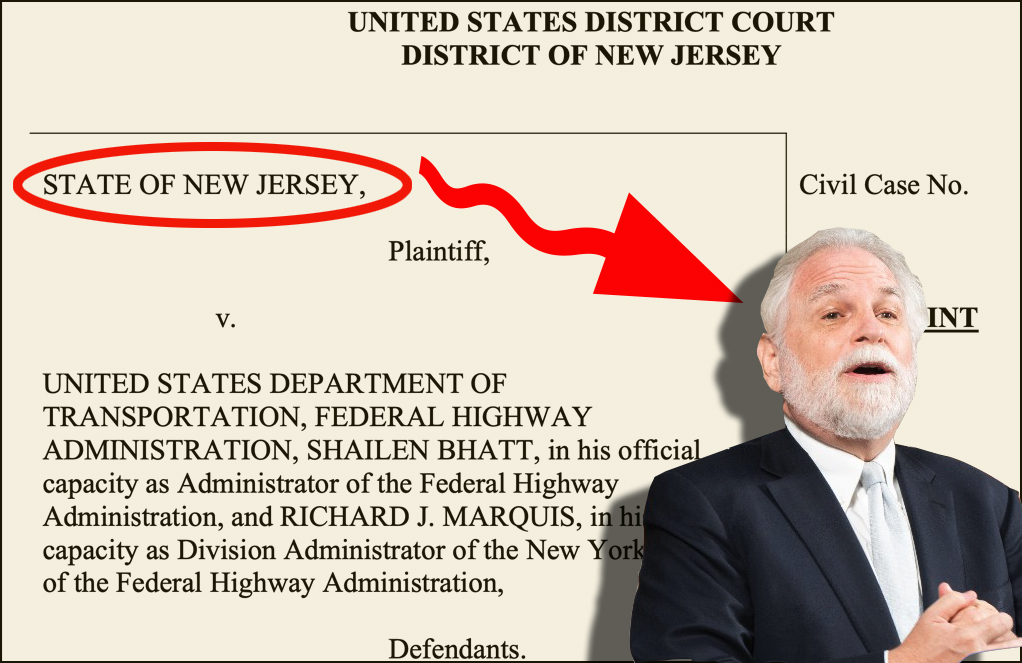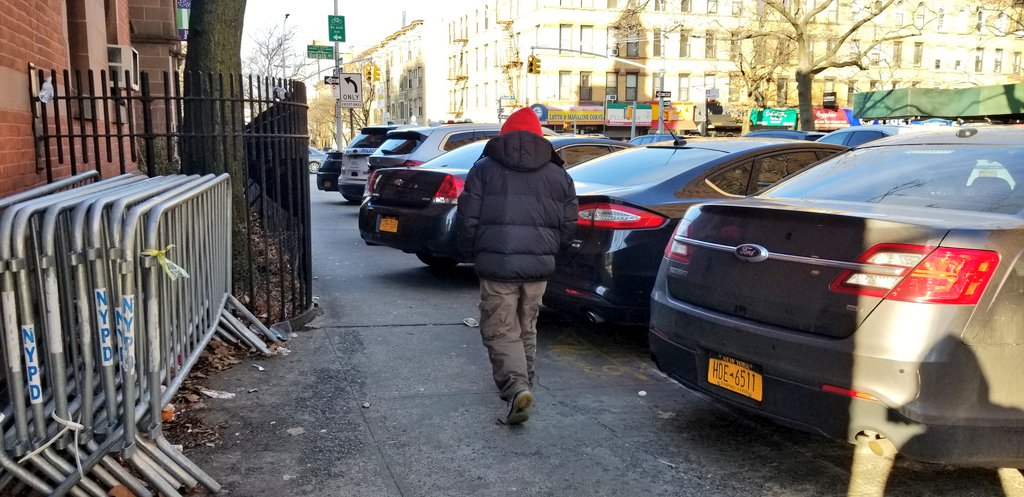Contrary to popular belief, the mayor isn't the only elected official with a say in New York City transportation policy. So in this installment of Streetsblog's series on Michael Bloomberg's third term, we're switching things up a bit. We asked New York's most experienced transit advocate, Gene Russianoff of the Straphangers Campaign, how Comptroller-elect John Liu and Public Advocate-elect Bill de Blasio can put their clout to use for New Yorkers who depend on buses and trains. Here's what he told us.
What can the incoming city comptroller and public advocate do to improve the lives of millions of daily subway and bus riders over their next four years in office?
New Yorkers can be forgiven for putting our focus on the chief executive in City Hall. Our city has what’s called a "strong mayor" form of government. Mayor Bloomberg’s budget powers are great, and virtually all of his commissioners do not have to be approved by the City Council. The mayor is often seen as the Sun King. Everyone else can seem like Rosenkrantz and Guildenstern -- not much of a stage presence.
While it's right to hold the mayor accountable for what the city does on public transportation, there's much that Public Advocate Bill de Blasio and Comptroller John Liu can do on behalf of the city's commuters.
Both gentlemen took stands on key transportation issues as council members. Liu served as chair of the council’s transportation committee and de Blasio promoted the return of F express service in Brooklyn and proposed a "Transit Rider’s Bill of Rights." Additionally, Liu voted for congestion pricing, de Blasio against. Later, de Blasio favored East and Harlem River bridge tolls pegged to the subway fare to fund the MTA, which Liu opposed.
So there’s every reason to expect them to be vocal on transportation. And they’ll have plenty of opportunities to take action. To start with, millions of New York City bus riders have a big stake in the service improvements that newly appointed MTA Chair Jay Walder and Mayor Bloomberg have each made a high priority. De Blasio and Liu, if they choose, can use their new offices to help give millions of transit riders the best possible outcome as these plans advance.
Let’s start with what the public advocate can do. This office was set up to be an “ombudsperson,” which in everyday English means listening to complaints from the public and working to make sure they are resolved. In addition, the public advocate looks for patterns of problems in service delivery.
A good place for de Blasio to start would be to encourage some of the 2.4 million daily weekday bus riders to call his office. They have an earful of woes to talk about, such as slow, unreliable and crowded service. I hope that Advocate de Blasio can make cataloguing the complaints of riders a top priority. The precedent is there. Carol Bellamy, who served several years as president of the City Council (the precursor to the public advocate), was so vocal on transit that former Governor Mario Cuomo appointed her to the MTA board.
The Bloomberg administration has proposed using Bus Rapid Transit strategies on several pilot routes to quicken service and improve reliability. These include providing truly exclusive bus lanes, giving buses priority at traffic signals, designing bus stops to reduce conflicts with traffic, and having riders pay fares before board. Another ingredient -- bus-mounted cameras to enforce exclusive lanes -- may become available if Albany approves the necessary legislation.
A limited form of BRT -- called Select Bus Service -- is already in operation on the Bx12 on Fordham Road and Pelham Parkway in the Bronx. It has reduced travel times 24 percent. Another SBS route has started on 34th Street in Midtown. And still another one is due on First and Second Avenues in Manhattan next September.
The Straphangers Campaign hopes that de Blasio uses his bully pulpit to press for picking up the pace and scope of Bus Rapid Transit routes. He can take up the cause of camera enforcement for bus lanes, helping its chances in Albany. He can also serve a mediating role to make sure the concerns of community players are taken into account without endangering the effectiveness of BRT improvements. Stakeholders include bus passengers, community leaders, bicycle riders, and small businesses. Especially in the outer boroughs, which stand to gain the most from BRT, the public advocate's independent voice will carry a lot of weight.
Comptroller Liu can come to the aid of bus riders as well, by using his audit powers to make sure BRT strategies work for New York. The comptroller is an independent elected public servant and his views on BRT will carry a different kind of weight than NYC DOT or the MTA.
Bus service, of course, is not the only transportation issue that these two citywide offices can take on. For example, outgoing comptroller Bill Thompson did a great job documenting how New York City was shortchanged on state transit aid. (See this report.) And his hard-working transit aide Joseph Rappaport keeps many important issues alive, from cuts to transit service to making the MTA more transparent.
Among possible future audits for the new comptroller to consider:
- On-time performance and other official NYC Transit statistics
- Reviewing the work of the new line managers
- Reviewing the MTA capital program to see where it is over timeline and budget
- The status of “mega-projects" like the Second Avenue Subway.
Citywide officials like the comptroller and the public advocate are automatically considered potential candidates for mayor in the next go-round. If they choose to run -- either for mayor or for re-election -- they of course will be judged on what they've done for New Yorkers, including millions of subway and bus riders.





